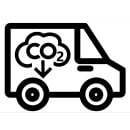In order to use this website you need to accept the use of Cookies , our Privacy Policy , and our Terms and Conditions.

Want access to a world of information? Join our Cannabis Growers Club! Here you will be able to learn more about growing cannabis as well as get some great tips and tricks from fellow growers to take your growing skills to the next level.
TAKE ME TO THE CANNABIS GROWERS CLUB OF SOUTH AFRICA
Once you have bought your grow light, the next step is setting it up in your tent, but this is not as simple as just hanging it up and switching it on. You will need to install it correctly and at the right hanging distance. Too much light can damage your plant as much as too little light. The trick is to determine the ideal height to help you achieve optimum light yields.
Hanging Distance Between Lights and Plants
No matter which type of grow light you want to install, you will want to mount the main part of the light in the centre of the tent, so that it gives the best coverage. If you have a larger tent and need two lights you will mount one light in the centre of one half and the second light in the centre of the other half.
Once you have installed your grow lights in your tent, the next step is to make sure they are at the correct distance from your plants.
Simply hanging up your grow light is not enough if you want to get the most out of your cannabis grow. To really get your plants to their full potential, you need to hang your lights at the most efficient height. This simple yet overlooked factor can make all the difference to your grow.
Getting your lights at the perfect height is kind of like Goldilocks and the 3 bears, you got to get it just right. The closer the light is to the plants, the better quality of light they are going to get. However, you need to make sure they are not too close that they will burn your plants and at the same time, not too far that the quality of light is diminished.
The position of your grow lights will determine:
- The overall light intensity
- How much light is lost to walls
- Penetration angles
The type of light you are using greatly influences how close you will hang your light to your plants. Different types of grow light produce a different amount of heat.
Why do different grow lights need to be hung at different heights?
HID (MH, HPS)
HID bulbs come in a metal halide (MH) version with cold light for vegetative phase and a high-pressure sodium (HPS) version with a much wider spectrum for the flowering stage. HID lamps produce a lot of heat and require a proper cooling and exhaust system. If you have an HPS grow light, it will consist of a ballast, reflector and a lamp.
The proper distance for both MH and HPS bulbs depends mainly on the wattage.
What distance should the light be from the plant? |
|||
|
Bulb |
Plant Distance |
Recommended Area |
Amount of Plants |
|
400W |
At least 30cm away from your canopy |
Up to 1.1m x 1.1m |
6 - 9 |
|
600W |
At least 45cm away from your canopy |
Up to 1.4m x 1.4m |
9 -12 |
|
1000W |
At least 60cm away from your canopy |
Up to 1.8m x 1.8m |
12 - 16+ |
CFL and Fluorescent
Fluorescent lights like T5 and CFL's tend to be used in small grow tents. They do not produce enough heat to cause light burn the way you get with the other more powerful lights. CFL lights normally only consist of a bulb and a reflector.
Fluorescent lights are not known for producing lots of heat, but they will still generate some heat while they run. These lights will need to be hung pretty close to the plants in order to provide a healthy light intensity for growth. In general, you will want to hang your light no more than 30cm away from your plants, anything after 30cm your fluorescent lighting will lose its power.
LED
LED light systems normally consist of just the LED unit and little else, making them simple to install in your grow tent. LED lights generate a lot less heat than HID bulbs, but they still need some cooling to prevent accidental burning of your plants. LED lights give off a great amount of light pressure, even at relatively low temperatures. This amount of light itself, not the heat, can cause light burn and leaf bleaching if hung to close to your plants.
The hanging distance will largely depend on the wattage of diodes you are using, the lower the wattage the closer it can be to the plants.
Different models of LED lights will have different optimal distance from plants. Manufacturers will usually include recommendations alongside their products. Its best to start at a medium distance within the recommended range and observe your plants over a few days. If you notice any leaves turning pale or with burned tips, then lift your lights up higher.
The below table provides a general reference of distance between your LED light and plants.
What distance should the light be from the plant? |
|
|
Wattage |
Plant Distance |
|
200 - 400W |
30 - 70cm away from your canopy |
|
450 - 600W |
50 - 80cm away from your canopy |
Higher wattage systems must be located even further away.
Take note that while HID's need to be hung at a consistent distance throughout the plant's growth cycle, LED's will need to be moved closer to the plant during the flowering stage.
Cannabis plants capture energy from the light and use it to grow and produce bigger buds. To maximise your yields, you will want to give you plant as much light as possible, but without causing light burn.
Here are some symptoms to help you determine if your lights are too close:
1. Folding and Hiding
This is usually seen when young, tender plants are transplanted outside or place under an intense light too soon. The sudden change in light volume can cause plants to attempt to fold over themselves in an effort to try provide themselves with shade.
2. Stunted Development
You can see this symptom especially in flowering plants, the upper most growth will be unable to cope with the overabundance of light and begin slowing or even halting growth as a result.
3. Bleaching of the leaves
Bleaching is especially common on the growth nearest the top of the plant. This happens when there is too much light. The intense light will start to evaporate the chlorophyll out of your plants tissue resulting in leaves turning a pale yellow. This is sometimes mistaken for a nutrient deficiency but if you look closely the symptoms will be concentrated directly under the grow light.
4. Physical Burning
Your plant can get burnt from a light that is too close. The leaves will begin to turn yellow and the tips will start to turn brown and crisp to the touch. There have been rare occurrences where a plant will grow into the grow light due the light being too close to the plant. Under the wrong circumstances, the heat from a light may be enough to completely dehydrate the tissue and cause irreparable damage.
This diagram shows the three important levels of intensity.

Red Zone
This is the space with the hottest, brightest area of light directly underneath your light. If your plants are constantly reaching this point, you should consider raising your light.
Green Zone
This zone offers the optimal amount of light. Not too intense or hot but still very strong and direct with a good amount of horizontal coverage and vertical penetration.
Blue Zone
This is the light that is barely usable to your plants. The intensity is too low to provide your plants with more than the bare essentials for photosynthesis. When you are trying to grow your cannabis plant to its full potential and produce great yields, this level just will not do.
Grow Lights and Reflectors
Different reflectors produce different shaped lighting footprints. Choosing the right reflector can make the difference in efficiency regarding the final hanging height. Many manufacturers offer a basic wing style reflector suitable for use with anything from a 250 watt Metal Halide to a 1000 watt HPS.
Open End Reflectors
These reflectors let a lot of heat escape, so you can bring them closer to your plants.
Closed End Reflectors
These have more of an intense focus of light and therefore have a great heat build-up. They will need to be positioned farther away from your plants.
Air Cooled Reflectors
Air cooled reflectors can be brought closer to the plants than the closed end reflectors. However, cold air rushing over the bulb can decrease the burning temperatures of gases inside, resulting in a loss of spectrum.
Measuring Optimal Cannabis Light Levels
If you have a Lux Meter to measure the brightness levels of your grow light, you can get even more accurate with the distance to hang them.
A lux meter is not a perfect measurement of light because "lux" is not exactly what matters to your plants. However, a lux meter is accurate enough for indoor cannabis growing when it comes to fluorescent, CFL, MH and HPS grow lights.
This is a quick guide for reference when it comes to lux levels for optimal cannabis growth.
|
Life Stage |
Maximum |
Good |
Minimum |
|
Vegetative |
70 000 lux |
40 000 lux |
15 000 lux |
|
Flowering |
85 000 lux |
60 000 lux |
35 000 lux |
Less than 15 000 lux
You will notice very sparse or stretchy growth. The plant is not getting enough light and is therefore stretching to reach it.
15 000 - 50 000 lux
This is a good amount of light for healthy vegetative growth.
45 000 - 70 000 lux
Optimal amount of light for cannabis in the flowering stage for bud development.
70 000 - 85 000 lux
This is a lot of light, some strains thrive at this light level, but some plants like auto-flowering and indica strains tend to lose their top leaves early under this light intensity. The grow light will need to be kept further away for healthy growth.
More than 85 000 lux
If you are at this light intensity, you have hit the plants saturation point which means the plant cannot use all the light it is receiving and the chances of light bleaching or light burn are high.
Another simple method to test if your light is too close is the "hand test", hold your hand where your plant is, hold your hand there for 30 seconds, if it feels too hot for your hand then is will most likely be too hot for your plant.
Some Final Notes
Once you have the optimal distance down, it will be much easier to maintain in all future grows. It may seem like a lot of work, but it will be worthwhile to learn where the best hanging distance is for optimal growth in your cannabis plant.

